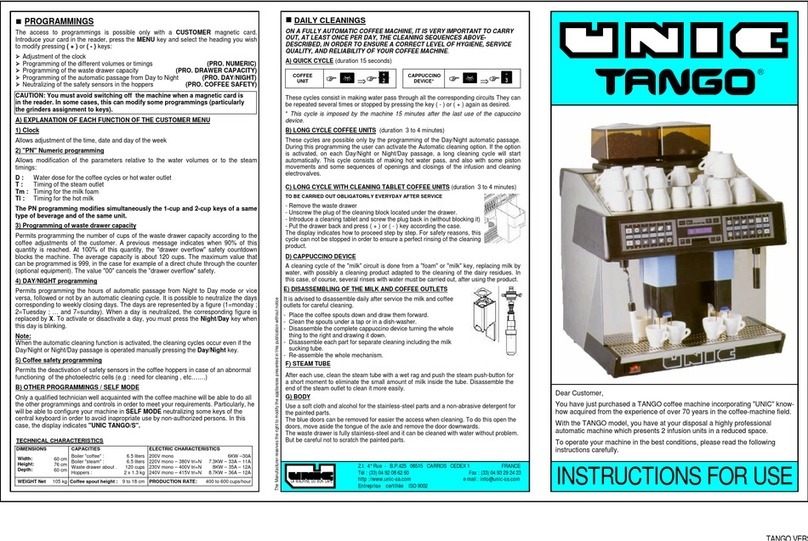
5
Contents
A SAFETY INFORMATION.........................................................................................................................6
A.1 General information ......................................................................................................................6
A.2 General safety .............................................................................................................................6
A.3 Personal protection equipment ........................................................................................................7
A.4 Transport, handling and storage ......................................................................................................7
A.5 Installation and assembly ............................................................................................................... 8
A.6 Water connection..........................................................................................................................8
A.7 Electrical connection .....................................................................................................................8
A.8 Use ...........................................................................................................................................9
A.9 appliance cleaning and maintenance .............................................................................................. 10
A.10 Service..................................................................................................................................... 10
A.11 Disposal of packing..................................................................................................................... 10
A.12 Machine disposal........................................................................................................................ 10
B GENERAL SAFETY RULES................................................................................................................... 11
B.1 Introduction ............................................................................................................................... 11
B.2 Mechanical safety characteristics, hazards....................................................................................... 11
B.3 Protection devices installed on the machine ..................................................................................... 11
B.4 Main switch ............................................................................................................................... 11
B.4.1 Appliance with 2 positions main switch................................................................................... 11
B.5 Safety signs to be placed on the appliance or near its area .................................................................. 11
B.6 Instructions for use and maintenance.............................................................................................. 11
B.7 Reasonably foreseeable improper use ............................................................................................ 11
B.8 End of use ................................................................................................................................ 11
B.9 Residual risks ............................................................................................................................ 11
C GENERAL INFORMATION .................................................................................................................... 12
C.1 Introduction ............................................................................................................................... 12
C.2 Definitions................................................................................................................................. 12
C.3 Machine and manufacturer's identification data ................................................................................. 12
C.4 Responsibility ............................................................................................................................ 13
C.5 Copyright.................................................................................................................................. 13
C.6 Keeping the manual .................................................................................................................... 13
C.7 Recipients of the manual .............................................................................................................. 13
D NORMAL USE .................................................................................................................................... 13
D.1 Characteristics of personnel enabled to operate on the appliance ......................................................... 13
D.2 Basic requirements for appliance use.............................................................................................. 13
E TECHNICAL CHARACTERISTICS .......................................................................................................... 14
E.1 Data table ................................................................................................................................. 14
F DESCRIPTION PRODUCT .................................................................................................................... 14
F.1 Overview .................................................................................................................................. 14
G OPERATING....................................................................................................................................... 14
G.1 Switching on.............................................................................................................................. 14
G.2 Coffee...................................................................................................................................... 15
G.3 Screen (display) ......................................................................................................................... 15
G.4 Screen during an infusion ............................................................................................................. 15
G.4.1 Screen drink delivery ......................................................................................................... 15
G.4.2 Screen during infusion........................................................................................................ 15
H CLEANING......................................................................................................................................... 15
H.1 Intro......................................................................................................................................... 15
H.2 Daily cleaning cycles (duration ~10 minutes) .................................................................................... 16
H.3 Cleaning milk (in the case of a milk pump system) ............................................................................. 16
H.4 External cleaning........................................................................................................................ 16
I MAINTENANCE .................................................................................................................................. 16
I.1 Maintenance intervals.................................................................................................................. 16
I.1.1 Preventive Maintenance ..................................................................................................... 16
I.2 Preventive maintenance for coffee products ..................................................................................... 16
I.3 Softener ................................................................................................................................... 17
I.4 Machine disposal........................................................................................................................ 17




























